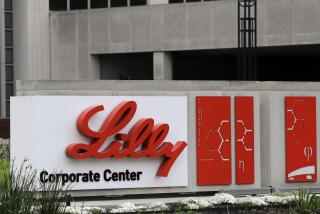FDA struggles to keep unapproved drugs off the market
- Share via
Reporting from Washington — As the Food and Drug Administration struggles to test new pharmaceuticals, monitor food safety and make sure problems are not developing with drugs already on the market, it’s also trying to deal with a problem most people don’t even know exists: about 2,000 prescription drugs that are being sold without the agency’s blessing for safety and effectiveness.
“We don’t know what’s in them. We don’t know how they work. We don’t know how they’re made,” said Michael Levy, director of the FDA’s division of New Drugs and Labeling Compliance.
In many cases, the agency doesn’t even know what the drugs are, or where they are. And every year, even as the FDA weeds out some, other unapproved drugs find their way to market.
A big part of the problem is that the FDA, which has long been short on the staff and resources experts say it needs to meet its far-flung responsibilities, has assigned only a small team to the problem: one doctor, one nurse, two pharmacists and three lawyers.
The agency insists they punch above their weight. Five years into the Unapproved Drugs Initiative, the FDA says it has pushed off the market 550 compounds made or distributed by at least 275 companies.
Most of the unapproved drugs contain ingredients that were on the market before passage of the 1962 law requiring companies to prove the effectiveness before marketing a new product. In other cases, manufacturers simply marketed drugs without seeking FDA approval — “exploiting the fact that FDA was not quite as active as it could be” in policing the drug marketplace, according to Deb Autor, current head of compliance in the FDA’s drug office.
The initiative to deal with unapproved drugs has drawn particular support from health groups representing minorities, some of whom have lower incomes and higher rates of uninsurance, which could make them more likely to receive the unapproved medications, which are usually cheaper.
“African Americans and also Latinos would be more susceptible to having to take these drugs,” said Roquell Wyche, director of outreach for the Assn. of Black Cardiologists, which has publicized the FDA effort in its newsletters.
Overall damage from untested products is hard to gauge, because “people don’t link an adverse event to their drug,” Autor said. “We think there’s much more harm than we can document.”
In a few cases, use of unapproved compounds has been linked to deaths, though FDA officials note that they have not always been able to do the extended work necessary to establish direct cause and effect. In 2006, for example, the FDA received reports of 21 deaths of children under 2 who had been given an unapproved version of an antihistamine called carbinoxamine.
With such limited resources, the FDA tries to focus on medicines with obvious public health implications.
Last March, for instance, the FDA ordered Glenmark Generics of Mahwah, N.J., and Konec Inc. of Tucson, Ariz., to stop making unapproved nitroglycerin tablets, which are used to relieve chest pain associated with heart disease.
In June, the agency warned Adamis Pharmaceuticals of Del Mar, Calif., to stop selling unapproved single dose epinephrine injections used to treat severe allergic reactions. The injection was billed as a low-cost alternative to an approved product, the widely-used EpiPen injector.
A month later, federal authorities seized cyanide antidote kits containing unapproved drugs from Keystone Pharmaceuticals of Laguna Hills, Calif.
But the problem persists. FDA officials estimate that between 1% and 2% of all prescriptions may be filled with unapproved drugs.
Because unapproved drugs frequently are less costly than approved pharmaceuticals used to treat similar conditions, they are often thought to be generic drugs — which also require FDA approval.
“Some of the cheaper drugs are the older ones because they’ve been on the market so long,” Wyche said. “People are not aware that these are not generic medications.”
More to Read
Sign up for Essential California
The most important California stories and recommendations in your inbox every morning.
You may occasionally receive promotional content from the Los Angeles Times.










